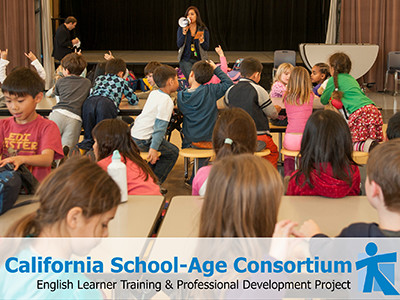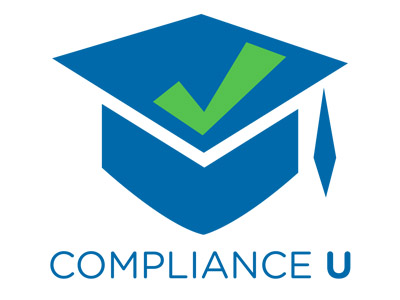 |
Ending Extinction: The Basics - Module 1 |
2.50 |
The goal of this course is to lead the fight against extinction by taking a leadership role and collaborating with others to save species from extinction using science-based techniques and fostering collaboration and cooperation. |
 |
Ending Extinction: The Basics - Module 2 |
2.50 |
The goal of this course is to lead the fight against extinction by taking a leadership role and collaborating with others to save species from extinction using science-based techniques and fostering collaboration and cooperation. |
 |
Energy and the Environment |
2.00 |
CalSAC has partnered with the Pacific Gas & Electric Company (PG&E) to bring the Energenius® Out-of-School Time Program to our online training platform. This FREE environmental stewardship curriculum is designed to engage children and youth to think about how they use energy, how energy is measured, paid for, and ways to save energy. Children and youth will understand how they can help reduce the impacts of energy use and production on the environment, and also practice influencing others to take energy-saving actions. Additionally, the curriculum is uniquely and intentionally designed to engage families in energy and water conservation habits.
Energy and the Environment is Activity Guide #2 in the 4-part Energenius® Out-of-School Time Program. The curriculum and activities are designed to engage children and youth in understanding how energy is produced, where energy comes from, and some impacts of energy use and energy production on the environment. This course will prepare participants to deliver the activities from the Energy and the Environment Activity Guide as well as connect families to resources to help save energy and money. |
 |
Energy and You! |
2.00 |
CalSAC has partnered with the Pacific Gas & Electric Company (PG&E) to bring the Energenius® Out-of-School Time Program to our online training platform. This FREE environmental stewardship curriculum is designed to engage children and youth to think about how they use energy, how energy is measured, paid for, and ways to save energy. Children and youth will understand how they can help reduce the impacts of energy use and production on the environment, and also practice influencing others to take energy-saving actions. Additionally, the curriculum is uniquely and intentionally designed to engage families in energy and water conservation habits.
Energy and You is Activity Guide #1 in the 4-part curriculum Energenius® Out-of-School Time Program. The curriculum and activities are designed to engage children and youth to think about how they use energy, how energy is measured and paid for, and ways to save energy. This course will prepare participants to deliver the activities from the Energy and You Activity Guide as well as connect families to resources to help save energy and money. |
 |
Enfermedades por calor (Spanish) Heat Illness |
0.75 |
Este curso cubre los diferentes tipos de enfermedades relacionadas con el calor. Se describe cada enfermedad y se proporcionan detalles de prevención. Además, el curso cubre un ejemplo de estudio de caso para ayudarlo a ponerse en una situación y aplicar lo que ha aprendido. |
 |
Engaging Elementary Youth in College & Career Readiness |
2.00 |
This course will introduce participants to the newest addition to the College & Career Readiness Toolkit, developed by the Maryland Out-of-School Time (MOST) Network, the College & Career Readiness in Elementary Grades Unit. This course will also highlight developmentally appropriate activities and considerations for implementing college & career readiness with elementary school youth, specifically in an out-of-schooltime setting. |
 |
Engaging English Learner Families and Communities |
1.00 |
This course will help you go deeper and gain more examples and strategies related to some of the five tips for engaging English learners' families and communities introduced in the training. Through this online course, you will learn more tips and strategies to better engage the English learner (EL) families in your school or classroom. |
 |
Engaging English Learner Families and Communities |
2.00 |
This online course serves as a compliment to Healthy Cultural Identities and Engaging Families and Communities, an in-person training offered through CalSAC's English Learner Training and Professional Development Project. This course will help participants go deeper and gain more examples and strategies related to some of the 5 Tips for Engaging English Learners' Families and Communities introduced in the training. |
 |
Engaging High School Youth in College & Career Readiness |
1.00 |
This course will introduce participants to the College & Career Readiness Toolkit, developed by the Maryland Out-of-School Time (MOST) Network, as well as developmentally appropriate activities and considerations for implementing college & career readiness with high school youth in an out-of-school time setting. |
 |
Engaging Middle School Youth in College & Career Readiness |
1.00 |
This course will introduce participants to the College & Career Readiness Toolkit, developed by the Maryland Out-of-School Time (MOST) Network, as well as developmentally appropriate activities and considerations for implementing college & career readiness with middle school youth in an out-of-school time setting. |
 |
Engaging the Community in Quality Summer Programs |
2.00 |
CalSAC partnered with the Summer Matters campaign to create our Quality Summer Program training series. Summer months bring unique opportunities for learning outside the traditional school year and walls. High quality summer learning programs change students’ lives for the better with an opportunity to improve their academic achievement and readiness to learn. Developing quality programs requires intentional, ongoing development. Engage in activities that will help identify and strengthen the quality of your summer learning program.
Engaging the Community in Quality Summer Programs is the third module in the Quality Summer Programming Training series. People need to know how important summer is to the children and youth in your program and across the state. Summer learning program staff are all torchbearers for quality summer opportunities. In this module, participants will gain a deeper understanding of elements of high-quality summer programs by identifying resources to help strengthen their summer program offerings, engaging in collaborative reflection and planning, and developing clear goals for the summer program. |
 |
Engaging Your Employees in a World Famous Way |
1.00 |
Engaged employees are not just committed. They are not just passionate or proud. They have a line-of-sight on their own future and on the organization's mission, vision, and goals. They are "enthused" and "in gear," using their talents and discretionary effort to make a difference in their employer's quest for sustainable business success. Join us for this ENGAGING webinar on how the World Famous San Diego Zoo proactively turned Employee Engagement into a top organization objective - with stunning results! |
 |
English Language Learners |
1.00 |
This course will give you a greater understanding of the circumstances under which some English language learners came to the U.S. and the challenges they may face. Strategies for teaching language acquisition skills will be provided, and you will learn the importance of collaborating with families and communities. |
 |
English Learner Socio-Emotional Factors and Typologies Review |
0.50 |
This course serves as a compliment to Knowing English Learners, an in-person training offered through CalSAC's English Learner Training and Professional Development Project. This review course is for CalSAC EL Trainers and participants. CalSAC Trainers can use this module as a way to brush up on the Socio-Emotional Factors and English Learner Typologies before conducting a training, and participants can use the module to further their understanding of the Factors and Typologies. |
 |
Enhancing Emotional Literacy in Children Ages 3 Through 5 (CDA 3) |
2.00 |
This course equips early childhood professionals with evidence-based practices drawn from the Pyramid Model and Center on the Social and Emotional Foundations for Early Learning (CSEFEL) resources. Discover how to effectively support children's social-emotional development, laying a solid foundation for school readiness, healthy growth, and overall well-being. Watch children blossom into confident, connected learners as you guide them through essential skills like emotional regulation, empathy, and positive communication. |
 |
Enhancing Emotional Literacy in Children from Birth to Age 3 (CDA 3) |
2.00 |
Unlock the potential of your preschoolers! This course equips you with the Pyramid Model's and Center on the Social and Emotional Foundations for Early Learning's (CSEFEL) evidence-based strategies for nurturing their social and emotional development. Watch their confidence bloom as they build strong relationships, navigate emotions, and develop vital self-regulation skills. Invest in their school readiness and overall well-being with these powerful tools! |
 |
Environmental Enrichment and Adaptive Relevance in Zoos |
1.00 |
This course will review the history and philosophy behind environmental enrichment with a heavy emphasis on the relationship between individual species and their direct environment. We will explore novel ways to make enrichment an integrated component to the daily workload, and structuring programs that elicit natural behaviors in both frequency and diversity. Finally we will develop the concept of adaptive relevance using several taxonomic examples to further illustrate the boundless possibilities behavior-driven environmental enrichment provides. |
 |
Environmental Systems |
2.00 |
Many of the animals exhibited in zoos and aquariums have very specific environmental requirements that must be met in order to support the life form and better ensure its welfare. This course will explore the unique biological, physiological, and welfare requirements of several varied types of animals; their unique requirements; and the implications for the provision of these requirements. |
 |
Equal Opportunity 101 |
0.50 |
This course covers the laws of Equal Opportunity in the United States of America. Equal Opportunity is a state of fairness applied to various sectors of life, like employment, housing, and education. Under Equal Opportunity, these areas are free from discrimination and prejudice on the basis of race, religion, sex, and national origin.
This course will discuss acts and pieces of legislation, such as the Workforce Investment Act, the Civil Rights Act of 1964, the Rehabilitation Act of 1973, and more, as they apply to Equal Opportunity. |
 |
Equal Opportunity 101 (Corrections) |
0.17 |
The U.S. Department of Labor Civil Rights Center is committed to providing clear and easy-to-access information on how to comply with federal equal opportunity and nondiscrimination laws and regulations that (1) prohibit discrimination in DOL-funded programs and activities, and (2) prohibit discrimination on the basis of disability by certain public entities and in DOL-conducted activities. This course is a brief overview on equal opportunity rights. |
 |
Ergonomía (Spanish) Ergonomics |
1.00 |
Este curso cubre la definición de ergonomía, las directrices de OSHA, y factores de estrés ergonómicos. También este curso discutirá lesiones ergonómicas comunes y soluciones recomendadas para lesiones.
|
 |
Ergonomics |
0.75 |
This course covers the topic of ergonomics. Ergonomics is the relationship between workers and their working environment. It will discuss the many types of ergonomics, what ergonomics is, and ways to help yourself in the workplace. |
 |
Ergonomics for Food Service and Retail |
0.50 |
This course covers the importance of ergonomics, specifically in the food service and retail industries. This course will cover topics such as the benefits of ergonomics, Work Related Musculo-Skeletal Disorders (WMSDs), ergonomic risk factors, and how to reduce hazards from awkward positions and heavy lifting. |
 |
Ergonomics for General Industry: Making the Work Fit the Worker |
0.50 |
This course covers the basics of ergonomics, musculoskeletal disorders, and the signs and symptoms of these disorders. A worker's right to a safe workplace will also be addressed. |
 |
Ergonomics MSDs |
1.00 |
This course covers the basics of workplace ergonomics along with the identification of musculoskeletal disorders and how to prevent them. |


























